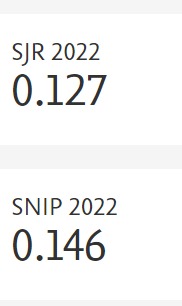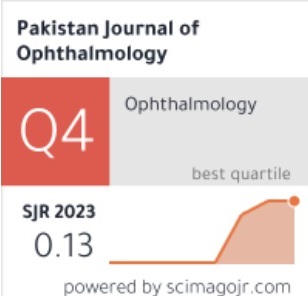Sub-Threshold Micro Pulse Laser (810NM): Treatment for Chronic Central Serous Retinopathy
http://doi.org/10.36351/pjo.v37i2.1152
DOI:
https://doi.org/10.36351/pjo.v37i2.1152Keywords:
Sub-Threshold micropulse laser, Central serous retinopathy, Central retinal thickness, sub retinal fluid.Abstract
Purpose: To find the effectiveness of sub-threshold (810nm) micropulse diode laser treatment (SMT) in chronic central serous retinopathy (CSR).
Study Design: Interventional case series.
Place and Duration of Study: Layton Rahmatulla benevolent trust eye hospital, from April 2019 to July 2020.
Methods: The patients of chronic CSR (? 6 months) participated in the study. We used Spectral Domain Optical coherence tomography (SD-OCT) to record baseline central retinal thickness (CT). Best corrected visual acuity (BCVA) was recorded with Snellen’s chart and converted to Log MAR for statistical analysis. All patients underwent treatment with sub-threshold laser (810nm) in micropulse mode with 5% duty cycle (DC).
Results: Twenty five eyes with chronic CSR were enrolled in the study. The patients were treated with laser and final assessment was made at 6 months. Mean BCVA at presentation was 0.46 Log MAR ± 0.12 and a mean baseline CT of 362.2 ?m ± 32.6µm. At final follow-up there was a mean decrease in CT of 97.2 ?m ± 21.8 from the baseline. After treatment mean BCVA was 0.33 Log MAR ± 0.12 and mean CT was 266 ?m ± 20.9. Nineteen out of twenty-five eyes (76%) achieved a gain of vision between 1 to 3 lines and gain of 3 lines was achieved in 8% of cases. At the final follow-up there was incomplete resolution of sub retinal fluid in 4 eyes (16%) with no improvement in BCVA.
Conclusion: SMT (810 nm) is an effective and minimally invasive treatment modality for chronic CSR.
Key Words: Sub-Threshold micropulse laser, Central serous retinopathy, Central retinal thickness, sub retinal fluid.






